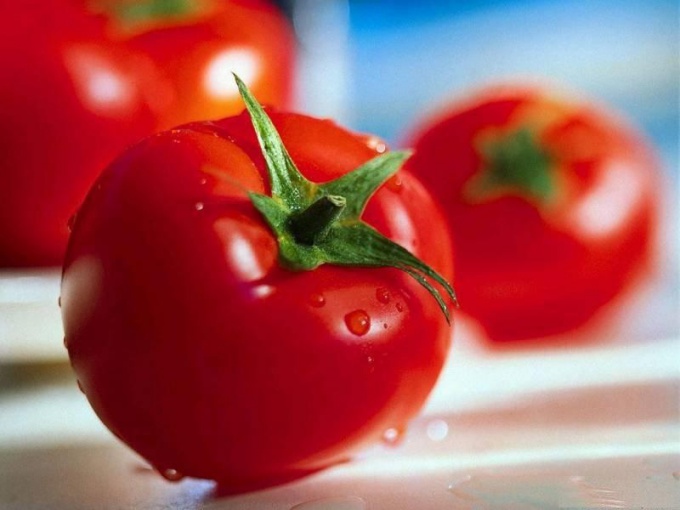The chemical composition of tomatoes
Tomato is the most valuable product in biochemical terms. It contains proteins, amino acids, enzymes, mono - and oligosaccharides (sucrose, raffinose, fructose), and polysaccharides – pectin and cellulose. The vegetable contains vitamins A, C, E, H, K, PP, and almost all b vitamins (not just B12 – cyanocobalamin). Among the many varieties of tomatoes there are those in which the vitamin C content is almost the same as in lemons, but they are not sour, and sugary.
Contained in tomatoes is a carotenoid (provitamin a) is a potent natural antioxidant, so these vegetables are good for those who do not want to age and also for cancer prevention. Oxalic acid, which is rich in tomato, removes toxins from the body, particularly effectively cleans blood and liver.
Tomatoes are rich in macro - and microelements – potassium, fluorine, copper, zinc, iodine, magnesium, calcium, etc. Especially a lot of tomatoes of cobalt (60%) of the elements involved in almost all processes occurring in the body: metabolism, cell renewal, the immune and circulatory systems. So, in the blood of cobalt stimulates the synthesis of hemoglobin and increases the degree of iron absorption.
Tomato – a natural antibiotic
In the skin of tomatoes is present quercetin. This substance works as a natural antibiotic, which successfully fights against inflammatory processes in the body. Fresh tomato juice has antiseptic and antibacterial properties, so it is useful during the catarrhal and infectious diseases. Tomato slices or cotton pads soaked in fresh juice, can be applied to bruises, injuries and wounds, they will help the rapid healing of damaged areas of the body.
The benefits of tomatoes for the cores and not only
Many useful, and sometimes miraculous properties, is bound tomatoes contained lycopene (lycopene) is a carotenoid pigment synthesized by some plants. This substance is in combination with potassium and magnesium, which are also rich in tomato, is an excellent tool for the prevention and treatment of cardiovascular diseases. Moreover, lycopene on the rights of the powerful antioxidant can prevent cancer and even halt the growth already in the body of cancer cells. This substance prevents the development of macular degeneration that often causes blindness in people over 55 years.
If you decide to use tomatoes as a preventive or therapeutic agent, keep in mind that the maximum amount of lycopene is not contained in fresh fruits and boiled, steamed or baked, i.e., the last heat treatment. Prolonged cooking level of concentration of lycopene in tomatoes is only increasing. Lycopene is better absorbed by the body if the tomatoes fill with sunflower oil.
Tomatoes in cosmetology
Fresh tomatoes are successfully used in cosmetology. People with oily skin type, prone to acne and irritation, useful mask of the red vegetable. Can, crushing tomatoes with a fork and adding in a slurry of oat flour or starch, and apply the resulting paste on cleansed face and hold for 8-10 minutes, then rinse with cool water. And you can just cut the tomato into slices and apply them on problem areas (cluster of pimples or areas with the highest sebaceous activity).
For dry skin you can make mask of a mixture of fresh tomato juice, fatty cheese and any vegetable oil. The composition applied to a clean face and leave for 5-10 minutes, then rinse with warm water and RUB moisturizer.
Tomatoes is able to smooth out fine lines and wrinkles to the complexion. It is necessary to use a red vegetable, both internally and externally, i.e. to eat and carry out cosmetic procedures to clean the face with juice of fresh tomatoes to make a mask based on the skin type.
